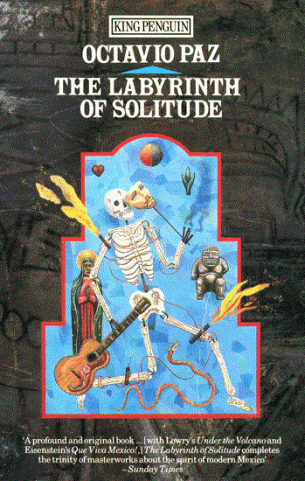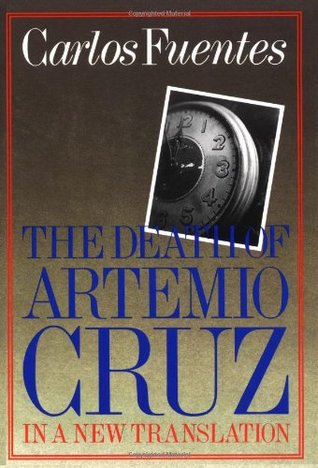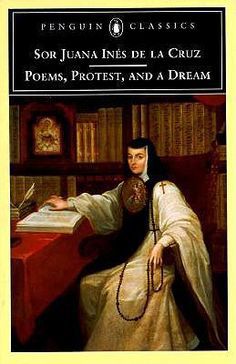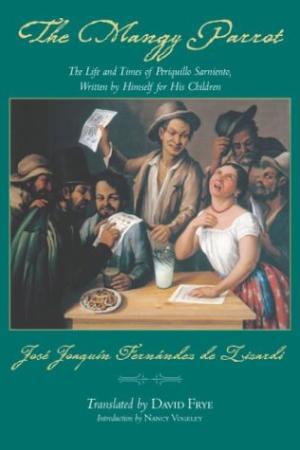You will not struggle to find Mexican literature in English translation. A rich literary heritage and an international outlook mean that the best Mexican authors are already well known in English (as are some of the worst). If you’re in Mexico, your reading options will probably be limited to a couple of the most famous writers (see below) unless you’re in a big city. Public libraries are pretty common and some will have English translations, but if you’re travelling in the sticks and don’t have an e-reader with WiFi, you’re probably just gonna have to learn Spanish.
In English, the most famous modern Mexican authors are probably Octavio Paz (mostly a poet) and Carlos Fuentes (mostly a novelist). Paz won the Nobel Prize for literature in 1990, and the Miguel de Cervantes Prize (a Nobel equivalent just for the Spanish language) in 1981. The Labyrinth of Solitude is his most famous work, though actually a book of essays, not poetry. Fuentes never won the Nobel despite frequent nominations, but won the Cervantes in 1987. His most famous novel is probably The Death of Artemio Cruz. Both authors are on Harold Bloom’s The Western Canon list; the only two Mexicans who are. Both are now dead (no causation implied).


Two other Mexican writers have won the Cervantes Prize: Sergio Pitol (novelist, 2005), and Jose Emilio Pacheco (various, 2009). Both have works translated into English, though I didn’t find any copies in Mexico.
Other famous modern authors include Juan Rulfo, Juan Jose Arreola, Elena Poniatowska, and Mariano Azuela; all of whom can be found in English, and have international reputations. Special mention should be given to Juan Rulfo’s Pedro Párama (1955) which was supposedly the catalyst for 100 Years of Solitude, and which Jorge Luis Borges considered one of the greatest of all time.
At the time of writing, some of the most famous Mexican writers don’t have English-language translations available to my knowledge, including Amado Nervo and Alfonso Reyes (who was nominated for the Nobel Prize five times if you’d believe it).
Older, historical Mexican literature is not widely available in English, though there are some special exceptions. Most notably: The Mangy Parrot by José Joaquín Fernández de Lizardi (1816): considered to be the first “novel” written in Latin America; and Poems by Sister Juana Inés de la Cruz (1689), an important figure in Mexican literature, whose face is on the back of the 200 peso note (she does also make Bloom’s Canon, though she’s listed under “Spain”).


Pre-Colombian Mexican literature is rarely available in English, though some Mayan works (including the Popul Vuh, a significant holy text) can be found, though . Reading one of these in the shadow of a ruined Mayan pyramid makes for a special experience.
Mexican books included on the English 1001 Books You Must Read Before You Die list (combined editions) are:
- The Underdogs – Mariano Azuela (1916)
- The Labyrinth of Solitude – Octavio Paz (1950)
- The Burning Plain – Juan Rulfo (1955)
- The Death of Artemio Cruz – Carlos Fuentes (1962)
- Here’s to You, Jesusa – Elena Poniatowska (1969)
- Like Water for Chocolate – Laura Esquivel (1989)
You should also include The Conquest of New Spain by Bernal Diaz del Castillo (1632), a historical account of the Spanish conquest, though Castillo himself was Spanish, obviously. The Spanish edition of the 1001 books includes a few works not included in the English edition, such as Pedro Párama and more works by Fuentes.
Mexico has more literary prizes than you can shake a burrito at, and they’re good sources of recommendations, if you’re not sated by the above:
- Alfonso Reyes International Prize
- Carlos Fuentes Prize
- FIL Literary Award in Romance Languages
- José Fuentes Mares National Prize for Literature
- Sor Juana Inés de la Cruz Prize
- Xavier Villaurrutia Award
For what it’s worth, there are also several famous English-language novels set in Mexico; such as Graham Greene’s The Power and the Glory, Malcolm Lowry’s Under the Volcano, and William Burroughs’ Junky. Greene’s book especially should only be enjoyed at temperatures above 35°C.
Wikipedia has a well-researched overview of Mexican literature available here, for more historical detail.
Advertisements Share this:This guide is part of my journey reading books around the world. It is not objective, nor faultless. To see what I read whilst travelling in Mexico, click here. Please add your suggestions in the comments below.





